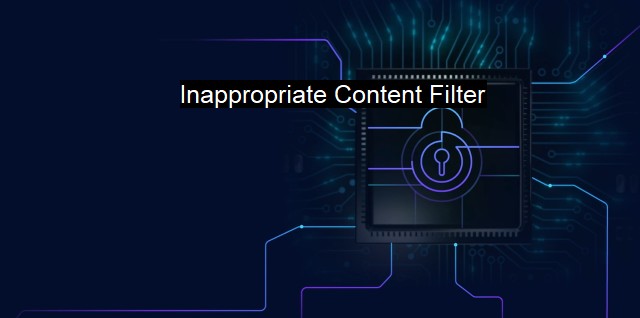What is Inappropriate Content Filter?
Protecting Your Online Experience: Understanding the Benefits of Inappropriate Content Filters
A fundamental feature called the "Inappropriate Content Filter" exists. This feature provides an extensive defense mechanism designed to block or filter content deemed unsuitable or harmful to internet users. It is specifically designed to protect unsuspecting users from being exposed to offensive or inappropriate content. This protective measure is presented in various forms, including software, programs, or even within some security platforms. It entails refined technology that scans through volumes of content to filter out the unwanted content, thus creating a safer internet experience.Inappropriate Content Filter is typically a component of antivirus software or a feature within network security applications. It is predominantly useful in places such as schools, homes, and workplaces, where the internet is heavily used, and boundaries on content are required. It provides a concluding ban on offensive language, discrimination, harassment, or anything that might be considered illegal or inappropriate for certain age groups.
In the digital age, with vast information and varying content across the internet, users are most likely exposed to a wide range of content that can be inappropriate depending on their age, ethical belief, work ethics, or individual preference. Examples of such content include violence, adult-related material, gambling sites, or compromises data confidentiality.
When it comes to combating cybersecurity threats, Inappropriate Content Filter has a significant role to play as part of a broader security solution. The filtering system can help to restrict the exposure to malicious content which may be embedded with harmful malware or viruses. By blocking such content, it minimizes the probability of the entries of these harmful entities into our systems, thereby fortifying the cybersecurity framework.
In terms of its mechanisms, Inappropriate Content Filter fundamentally uses a system of algorithms and program codes to screen the incoming organisational data and personal computer data. It retrieves the data on the interface, analyses it, and labels it as either "safe" or "inappropriate". Among the methods, it employs are pointer-scanners and out-of-bounds scanners that inspect the typical attributes of the controlled content and data inputs.
Users also have certain customizing options at their disposal. They can input their preferences into the filter and tailor it to their specific needs. Consequently, content that aligns with these preferences is filtered through, whereas unacceptable content by these standards is blocked. This feature allows each user to have control over their internet experience.
We need to understand that the Inappropriate Content Filter isn't a standalone feature. While it contributes to a significant decrease in unwanted exposure, it is not a holistic security feature. Users still require antivirus and other cybersecurity measures to bolster the defenses of their systems. This is because the filter doesn't have the capacity to completely wipe out the possibility of cyber threats.
The Inappropriate Content filter is a modern cybersecurity feature extremely crucial in our engagement with the digital world today. While its proactive nature in prohibiting inappropriate exposure to varied internet content does play an instrumental role in maximizing safety and efficiency, the bigger picture emphasis goes to the combined forces of antivirus, firewall, and other security mechanisms that make it a potent tool in the cybersecurity arsenal. Therefore, measures such as these, alongside a sensible use of the internet, show the procedure for securely interacting with the global electronic village.

Inappropriate Content Filter FAQs
What is an inappropriate content filter?
An inappropriate content filter is a cybersecurity tool used to prevent access to potentially harmful online content. It is a type of antivirus software that can identify and block inappropriate material such as pornography, violence, hate speech, and malware.How does an inappropriate content filter work?
An inappropriate content filter works by scanning websites for keywords, phrases, and images that match predefined criteria for inappropriate content. If the filter detects any such content, it will block the user's access to the page or website. Some filters also allow users to customize their settings and block or allow specific types of content.What are the benefits of using an inappropriate content filter?
The benefits of using an inappropriate content filter include better web security, protection against malware and phishing attacks, improved productivity, and a safer online experience for children and vulnerable individuals. It can also help organizations comply with regulatory requirements and avoid legal liabilities.What are the limitations of an inappropriate content filter?
An inappropriate content filter is not foolproof and may sometimes block legitimate content or fail to block inappropriate material. It may also be circumvented by tech-savvy users who know how to bypass the filter or use alternative channels to access blocked content. Therefore, an inappropriate content filter should be used as a complementary tool, and not as the sole defense against cybersecurity threats.| | A | | | B | | | C | | | D | | | E | | | F | | | G | | | H | | | I | | | J | | | K | | | L | | | M | |
| | N | | | O | | | P | | | Q | | | R | | | S | | | T | | | U | | | V | | | W | | | X | | | Y | | | Z | |
| | 1 | | | 2 | | | 3 | | | 4 | | | 7 | | | 8 | | |||||||